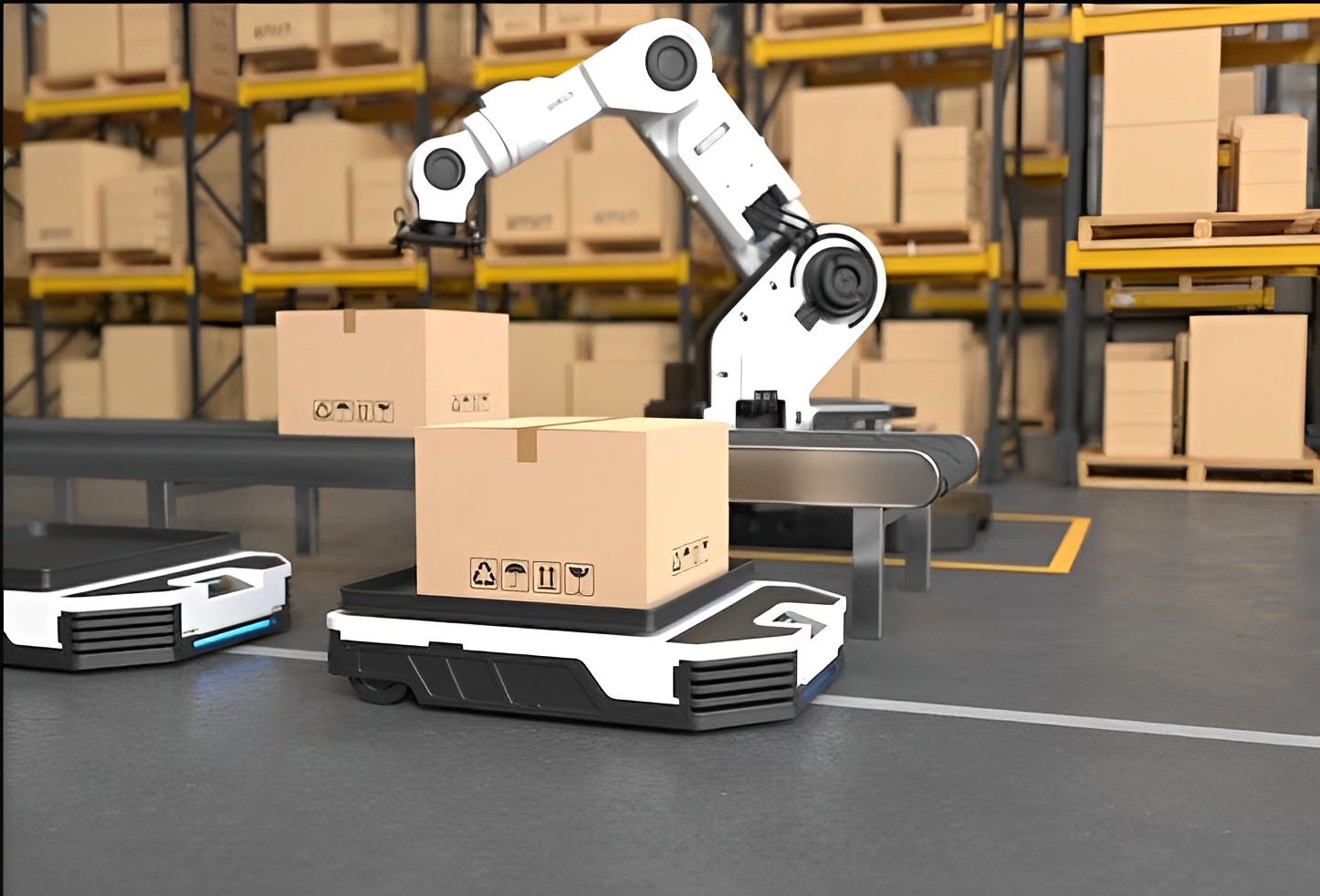Agile Robotics Automation Services
In recent times, the logistics industry has undergone a significant transformation through the implementation of agile robotics automation. The logistics industry has experienced rapid growth on a global scale, with an increasing demand for transportation and delivery services that are efficient, cost-effective, and timely. The field of agile robotics automation has made notable advancements in enhancing the logistics process by increasing efficiency, speed, and accuracy. Furthermore, it has brought about a significant transformation in the manner in which organizations perceive and approach their supply chain management, enhancing its ability to promptly adapt, react, and adjust to changing circumstances. This post aims to examine the effects of agile robotics automation on the logistics sector, including its operational mechanisms, advantages, and associated difficulties. Additionally, below we will illustrate the successful integration of this technology by various companies and the consequent transformative effects on their operations.
What is meant by the term “agile supply chain”?
When discussing supply chains, the term “agile supply chain” refers to the use of responsiveness, competence, speed, and flexibility as metrics to evaluate how effective and efficient a supply chain is on a day-to-day basis. An agile supply chain is meant to be adaptive and responsive, in contrast to conventional supply networks, which are rigid and inflexible in their structure. The use of real-time data and information that has been recently updated is a good aspect of an agile supply chain.
The disparity between an agile and resilient supply chain lies in their respective characteristics and operational approaches. An agile supply chain is characterized by its ability to swiftly adapt and respond to dynamic market conditions and customer demands. It emphasizes flexibility, speed, and responsiveness to effectively navigate uncertainties and changes in the
A robust supply chain is designed to experience and mitigate the impact of disruptions and unforeseen circumstances, such as natural calamities or worldwide emergencies.
What exactly are robotics automation services in logistics?
The use of robots and artificial intelligence in the field of transportation and logistics is one of the developments that is making steady progress but is receiving less attention than other trends. This application brings with it a significant shift to the corporate world, which may have great repercussions for certain people but may also have undesirable consequences for others. Companies and manufacturers will need to familiarize themselves with robots and machine learning for this scenario to become more prevalent in the mainstream. Robotic automation services may be put to use in a broad variety of contexts, including warehouse management and control, inventory management, order fulfillment, and transportation. Automated guided vehicles, often known as AGVs, can move freely around warehouses, allowing for the rapid and accurate delivery of products. Robotic arms have the capability of being programmed to undertake delicate and difficult jobs, which not only improves overall productivity but also ensures the safety of goods.
The use of robotics automation services for industrial distribution requires the utilization of robots and equipment equipped with intelligent systems to automate activities inside a warehouse, such as product retrieval, organization, transfers, and delivery. Traditional machinery, which is often run by people, is built to carry out certain functions with a restricted degree of adaptability. To guarantee that they are operating correctly, these machines need to be manually adjusted and subjected to continual monitoring. Industrial robots, on the other hand, are extremely sophisticated pieces of machinery that can carry out difficult jobs on their own, without the assistance of a human worker.
Below are some of the benefits of robotics automation services in logistics.
Better use of resources
Data input, invoice processing, delivery tracking, and order management are just some of the time-consuming and repetitive activities that may be streamlined and automated with the help of robotic process automation. The adoption of digital solutions and the execution of plans guided by data both contribute to increased efficiency in the logistics industry. This results in enhanced efficiency and productivity in logistics operations as a result of the fact that RPA bots can operate around the clock without the need for breaks or vacations. Additionally, this helps to reduce the amount of time spent on processing mistakes manually and improves overall performance.
Reduce expense
The steadily increasing prices of various forms of labor represent yet another important obstacle. The logistics business has historically relied heavily on manual labor for a variety of tasks, including loading and unloading vehicles, sorting items, and packing them for shipment. However, the labor costs connected with these jobs have been gradually growing, making it harder for logistics businesses to retain profitability while keeping pricing reasonable. Consequently, the industry as a whole has become less competitive. In addition, the use of robotics automation in the logistics sector results in considerable cost reductions. Businesses can minimize their labor expenses and more efficiently manage resources if they reduce the amount of physical work that is required. In addition, automation makes it possible to improve inventory management, which in turn lowers the danger of stockouts or overstocking and optimizes the procedures involved in supply chain operations.
Lower error Rate
When clients get the incorrect items, it is a major setback for e-commerce businesses, and it is common for these enterprises to lose their customers’ faith at this point. Automation in the warehouse may assist us in avoiding this issue by lowering the number of choices that warehouse workers are required to make, removing the possibility of pick-and-pack mistakes, and increasing the precision of orders.
Automated systems can unquestionably increase human accuracy, even though no system can ever be 100{29fe85292aceb8cf4c6c5bf484e3bcf0e26120073821381a5855b08e43d3ac09} precise. If mistakes do occur, automated systems can detect them and make corrections promptly. After all, automated systems have precision and accuracy that is very close to being ideal in the sphere of picking operations. To get a low RER, it is necessary to do thorough data preparation, feature engineering, and algorithm selection acceptably.
Increased Warehouse Productivity
Robots have unimaginable advantages over humans in terms of both speed and accuracy. But at the same time, robots will never be able to replace the cognitive ability that humans possess. They work well together to produce an efficient combination for the automation of warehouses.
The majority of the actions that need to be completed in a warehouse are often time-consuming and repetitive, and automation may assist reduce the number of touchpoints and inefficient processes that need to be completed across the warehouse. Many different approaches may be used to accomplish the goal of enhanced efficiency. The importance of planning the layout of the warehouse in a way that is both logical and methodical cannot be overstated.
Workers may spend less time moving products and re-picking since warehouse automation systems can detect the position of all items in a certain order nearly instantaneously. In addition, the use of automated warehouse robots and conveyor workstations may make order fulfillment much more efficient thanks to warehouse automation.
Improved working conditions
The machines that employees in logistics use may be relied on to carry high weights. This advantage lowers the likelihood of catastrophic incidents, which in turn lowers the danger to the worker’s health and protection.
Bottom Line: Robotics revolutionizing logistics
Robotics automation services are revolutionizing the way in which companies manage their supply chains and satisfy the requirements of their customers. Many prominent corporations, such as Google, Amazon, and Intel, have begun allocating their resources toward the field of automation. This technology enables the efficient allocation of resources by automating labor-intensive tasks, resulting in significant time and cost savings. The use of these technologies enables organizations to achieve an entirely new degree of operational excellence and maintain a competitive advantage in their respective markets.
The post What is the role of agile robotics automation services in logistics? appeared first on Datafloq.



